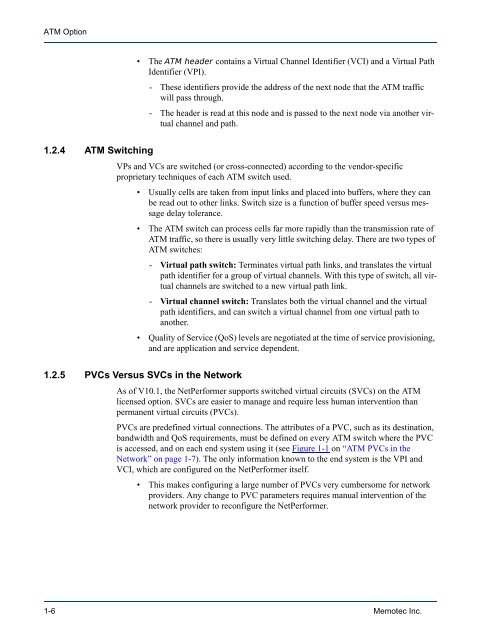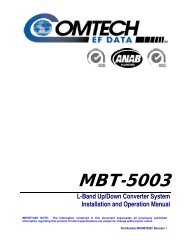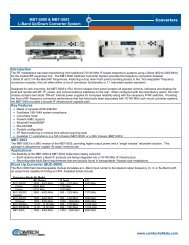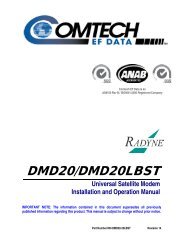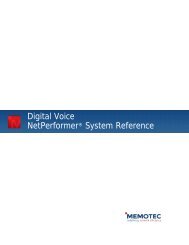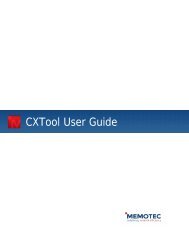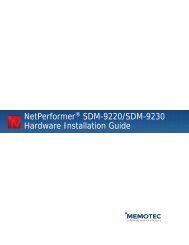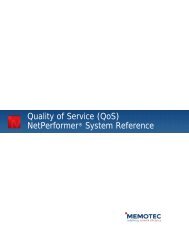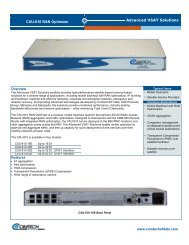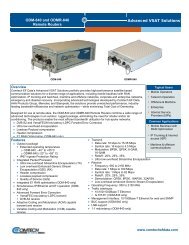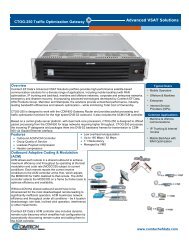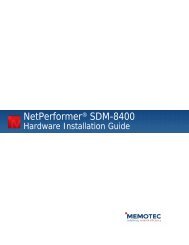ATM Option System Reference - Comtech EF Data
ATM Option System Reference - Comtech EF Data
ATM Option System Reference - Comtech EF Data
You also want an ePaper? Increase the reach of your titles
YUMPU automatically turns print PDFs into web optimized ePapers that Google loves.
<strong>ATM</strong> <strong>Option</strong><br />
1.2.4 <strong>ATM</strong> Switching<br />
• The <strong>ATM</strong> header contains a Virtual Channel Identifier (VCI) and a Virtual Path<br />
Identifier (VPI).<br />
- These identifiers provide the address of the next node that the <strong>ATM</strong> traffic<br />
will pass through.<br />
- The header is read at this node and is passed to the next node via another virtual<br />
channel and path.<br />
VPs and VCs are switched (or cross-connected) according to the vendor-specific<br />
proprietary techniques of each <strong>ATM</strong> switch used.<br />
• Usually cells are taken from input links and placed into buffers, where they can<br />
be read out to other links. Switch size is a function of buffer speed versus message<br />
delay tolerance.<br />
• The <strong>ATM</strong> switch can process cells far more rapidly than the transmission rate of<br />
<strong>ATM</strong> traffic, so there is usually very little switching delay. There are two types of<br />
<strong>ATM</strong> switches:<br />
- Virtual path switch: Terminates virtual path links, and translates the virtual<br />
path identifier for a group of virtual channels. With this type of switch, all virtual<br />
channels are switched to a new virtual path link.<br />
- Virtual channel switch: Translates both the virtual channel and the virtual<br />
path identifiers, and can switch a virtual channel from one virtual path to<br />
another.<br />
• Quality of Service (QoS) levels are negotiated at the time of service provisioning,<br />
and are application and service dependent.<br />
1.2.5 PVCs Versus SVCs in the Network<br />
As of V10.1, the NetPerformer supports switched virtual circuits (SVCs) on the <strong>ATM</strong><br />
licensed option. SVCs are easier to manage and require less human intervention than<br />
permanent virtual circuits (PVCs).<br />
PVCs are predefined virtual connections. The attributes of a PVC, such as its destination,<br />
bandwidth and QoS requirements, must be defined on every <strong>ATM</strong> switch where the PVC<br />
is accessed, and on each end system using it (see Figure 1-1 on “<strong>ATM</strong> PVCs in the<br />
Network” on page 1-7). The only information known to the end system is the VPI and<br />
VCI, which are configured on the NetPerformer itself.<br />
• This makes configuring a large number of PVCs very cumbersome for network<br />
providers. Any change to PVC parameters requires manual intervention of the<br />
network provider to reconfigure the NetPerformer.<br />
1-6 Memotec Inc.


